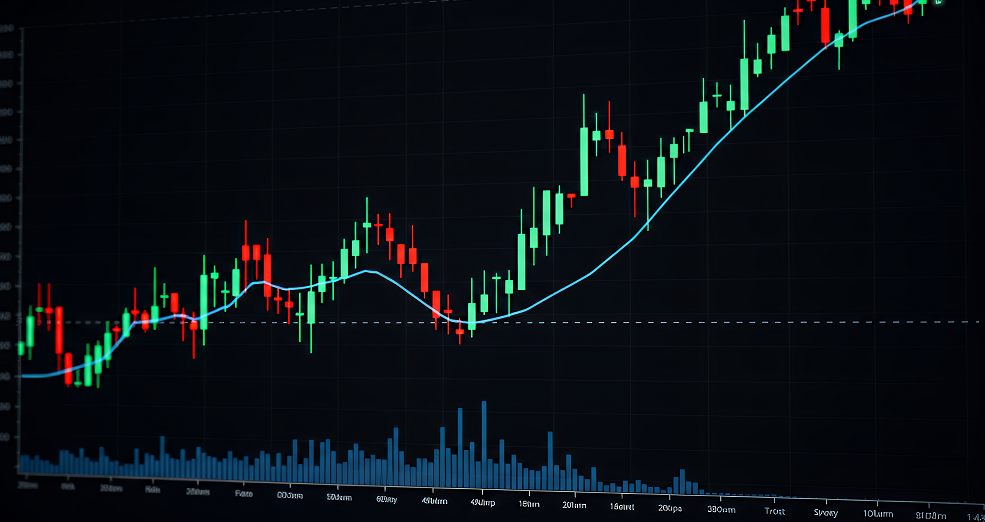IC Markets Asia Fundamental Forecast | 18 August 2025
What happened in the U.S session?
The session was marked by surprise inflation data, tempered hopes for rapid Fed easing, and sector-divergent equity market moves—most acutely felt in tech and FX response to USD strength. The July PPI report showed the biggest increase in three years, signaling a notable rise in inflationary pressures. This inflation uptick led traders to dial back expectations for the pace of Federal Reserve interest-rate cuts this year from 63 basis points to about 56.7, though markets still anticipate a 25bp cut in September.
What does it mean for the Asia sessions?
Asian traders should stay nimble and closely monitor macro headlines, central bank announcements, and earnings releases for trading opportunities and risk management. Asia-Pacific markets are set to open mixed on Monday. Hong Kong’s Hang Seng Index futures signal a positive start, while Australia’s ASX 200 futures project a slightly weaker opening. Japanese markets are closed for a holiday. Chinese and wider Asian tech shares are in focus following robust export data and earnings momentum, especially Tencent Holdings.
The Dollar Index (DXY)
Key news events today
No major news event
What can we expect from DXY today?
The U.S. Dollar enters Monday, August 18, 2025, in a slightly weakened posture against both developed and emerging market currencies. Index data shows mild downward momentum, and significant market releases scheduled this week may induce greater volatility and price action. Watch for official index updates and key macro announcements to drive further developments. Against the Euro, the USD is showing mixed performance. Traders are preparing for increased volatility during these sessions, especially with scheduled releases affecting the USD value.
Central Bank Notes:
- The Board of Governors of the Federal Reserve System voted unanimously to maintain the Federal Funds Rate in a target range of 4.25% to 4.50% at its meeting on July 29–30, 2025, keeping policy unchanged for the fifth consecutive meeting.
- The Committee reiterated its objective of achieving maximum employment and inflation at the rate of 2% over the longer run. While uncertainty around the economic outlook has diminished since earlier in the year, the Committee notes that challenges remain and continued vigilance is warranted.
- Policymakers remain highly attentive to risks on both sides of their dual mandate. The unemployment rate remains low, near 4.2%–4.5%, and labor market conditions are described as solid. However, inflation is still somewhat elevated, with the PCE price index at 2.6% and core inflation forecast at 3.1% for year-end 2025, up from earlier projections; tariff-related pressures are cited as a contributing factor.
- The Committee acknowledged that recent economic activity has expanded at a solid pace, with second-quarter annualized growth estimates near 2.4%. However, GDP growth for 2025 has been revised downward to 1.4% (from 1.7% projected in March), reflecting expectations of a slowdown in the coming quarters.
- In the revised Summary of Economic Projections, the unemployment rate is expected to average 4.5% in 2025, and headline PCE inflation is forecast at 3.0% for the year, with core PCE at 3.1%. Policymakers continue to anticipate that inflation will moderate gradually, with ongoing risks from tariffs and global conditions.
- The Committee reaffirmed its data-dependent and risk-aware approach to future policy decisions. Officials stated they are prepared to adjust the stance of monetary policy as appropriate if risks emerge that could impede progress toward the Fed’s goals.
- As previously outlined, the Committee continues the measured run-off of its securities holdings. The pace of balance sheet reduction, which slowed since April (monthly redemption cap on Treasury securities reduced from $25B to $5B, while holding agency MBS cap steady at $35B), was left unchanged this month to support orderly market functioning and financial conditions.
- The next meeting is scheduled for 16 to 17 September 2025.
Next 24 Hours Bias
Medium Bearish
Gold (XAU)
Key news events today
No major news event
What can we expect from Gold today?
Spot gold was around $3,336/oz in early Asia hours on Aug 18 (4:00 a.m. Vietnam time), roughly flat day-over-day but down about $58 from a week earlier, per Kitco-referenced reporting. Recent U.S. inflation data kept gold broadly steady into the end of last week as markets held expectations for Federal Reserve rate cuts, maintaining a supportive backdrop for bullion despite consolidation. The World Gold Council’s mid-year view noted gold’s 26% YTD gain in H1’25 amid record-setting prices, highlighting macro support from rates, currencies, and diversification flows heading into H2’25.
Next 24 Hours Bias
Medium Bullish
The Australian Dollar (AUD)
Key news events today
No major news event
What can we expect from AUD today?
The AUD starts Monday on a cautious footing around $0.65 as China’s softer July data and a firmer U.S. dollar post‑PPI offset support from the RBA’s recent cut; near‑term direction hinges on risk sentiment, China headlines, and incoming Australia sentiment/PMI prints later this week. U.S. macro backdrop: A stronger-than-expected U.S. PPI print late last week supported the dollar and capped AUD/USD, while markets still largely price near-term Fed easing; AUD remains range-bound around $0.65 into Monday’s session.
Central Bank Notes:
- The RBA held its cash rate steady at 3.85% at the July meeting on 8 July 2025, following a 25-basis-point reduction in May and in line with widespread market expectations, after recent data showed inflation tracking within the target band.
- Inflation continues to ease from its peak, with higher interest rates helping to rebalance demand and supply across the Australian economy. Data for the June quarter signaled ongoing progress, though underlying pressures persist in certain sectors.
- Trimmed mean inflation for the June quarter likely remained near 2.9% and headline CPI around 2.4%, both within the RBA’s 2–3% target range. The Board noted further evidence of inflation convergence, but flagged that not all price categories are moving in tandem.
- Financial markets have exhibited increased volatility in the wake of global tariff and trade policy developments—especially following recent announcements from the U.S. and the EU. This has pushed asset prices higher but contributed to an uncertain outlook for domestic growth and employment.
- Private domestic demand showed a tentative recovery. Real household incomes improved, and signs of easing household financial stress emerged, but some business sectors continued to face subdued demand, limiting their ability to pass on cost increases.
- Labour market conditions remained tight overall. Employment continued to expand, with low rates of underutilization. Business surveys suggest labour availability remains a constraint, though there are signs of a gradual easing compared to earlier in 2025.
- Underlying wage growth softened modestly, though unit labour cost growth remains elevated due to below-trend productivity gains. The Board remains attentive to developments in wage and productivity dynamics as cost pressures continue to evolve.
- Uncertainties persist for both domestic activity and inflation. Consumption growth has risen, but more slowly than anticipated three months ago, with global and domestic factors both contributing to the cautious outlook.
- There remains a risk that household spending picks up more slowly than forecast, which could result in ongoing subdued aggregate demand and a sharper deterioration in employment conditions.
- Given that inflation is expected to remain around the target band, the Board judged that it was appropriate to keep policy settings unchanged in July, maintaining a position that is still mildly restrictive.
- The Board continues to monitor all incoming data and assesses risks carefully, with a focus on global trends, domestic demand indicators, inflation outcomes, and the labour market outlook.
- The RBA remains committed to its mandate of price stability and full employment and stands ready to adjust policy as needed to achieve these objectives.
- The next meeting is on 11 to 12 August 2025.
Next 24 Hours Bias
Medium Bearish
The Kiwi Dollar (NZD)
Key news events today
No major news event
What can we expect from NZD today?
NZD/USD is hovering near 0.592–0.596 into Monday’s Asia session, remaining capped below 0.6000 after last week’s tight range, with resistance seen around 0.5975–0.5990 as traders await fresh catalysts later in the week. The Reserve Bank of New Zealand meets this week, with consensus expecting a 25bp cut, taking the OCR to 3.00%, and signaling a cautious, data-dependent easing bias thereafter. External risks include US trade policy: reports of US tariff measures affecting NZ exports have been cited as a headwind complicating the outlook and potentially pressuring the NZD if escalations persist.
Central Bank Notes:
- The Monetary Policy Committee (MPC) agreed to hold the Official Cash Rate (OCR) at 3.25% on 9 July, marking the first pause following six consecutive rate cuts.
- The MPC cited heightened uncertainty and near-term inflation risks as reasons to wait until August for further action.
- Although the annual consumer price index inflation increased to 2.5% in the first quarter of 2025, it remained within the MPC’s target range of 1 to 3%, noting that the outlook for medium-term inflation pressures has evolved broadly in line with the May MPS projections.
- While it is expected to be near the upper end of the band in the second and third quarters of this year, easing core inflation and spare capacity in the economy should help return it toward the 2% midpoint over time.
- The MPC noted that, despite global factors, domestic financial conditions are evolving broadly as expected, as mortgage and deposit interest rates have continued to decline, reflecting a lower OCR, strong bank liquidity, and soft credit growth.
- In aggregate, GDP growth over the December and March quarters was stronger than expected, reflecting a pickup in household consumption and business investment. However, higher-frequency indicators suggest weaker-than-expected growth in April and May.
- Large economic policy shifts overseas and concerns about sovereign risk could result in additional financial market volatility and increased bond yields, while prolonged economic uncertainty might induce further precautionary behaviour by households and firms, slowing the domestic economic recovery.
- Subject to medium-term inflation pressures continuing to ease in line with the Committee’s central projections, the Committee expects to lower the OCR further, broadly consistent with the projection outlined in May.
- The next meeting is on 20 August 2025.
Next 24 Hours Bias
Weak Bearish
The Japanese Yen (JPY)
Key news events today
No major news event
What can we expect from JPY today?
The yen enters Monday with modest tailwinds from Q2 GDP and lingering BoJ normalization expectations, but U.S. yield advantage and recent U.S. inflation data cap near-term upside for JPY.Intervention risk serves as a volatility dampener if disorderly weakness returns, though official action is typically reactive to speed and scale of moves rather than specific levels. Expect two-way trade around 147 with sensitivity to U.S. yields and any BoJ or MoF headlines; a clean break of recent ranges likely requires fresh data surprises or policy signals.
Central Bank Notes:
- The Policy Board of the Bank of Japan decided on 31 July, by a unanimous vote, to set the following guidelines for money market operations for the inter-meeting period:
- The Bank will encourage the uncollateralized overnight call rate to remain at around 0.5%.
- The BOJ will maintain its gradual reduction of monthly outright purchases of Japanese Government Bonds (JGBs). The scheduled amount of long-term government bond purchases will, in principle, continue to decrease by about ¥400 billion each quarter from January to March 2026, and by about ¥200 billion each quarter from April to June 2026 onward, targeting a purchase level near ¥2 trillion in January to March 2027.
- Japan’s economy is experiencing a moderate recovery overall, though some sectors remain sluggish. Overseas economies are generally growing moderately, but recent trade policies in major economies have introduced pockets of weakness. Exports and industrial production in Japan are essentially flat, with any uptick largely driven by front-loaded demand ahead of U.S. tariff increases.
- On the price front, the year-on-year rate of change in consumer prices (excluding fresh food) remains in the mid-3% range. This reflects continued wage pass-through, previous import cost surges, and further increases in food prices, particularly rice. Expectations for future inflation have begun to rise moderately.
- The effects of the earlier import price and food cost increases are expected to fade during the outlook period. There may be a temporary stagnation in core inflation as overall growth momentum softens.
- Looking forward, the economy is likely to see a slower growth pace in the near term as overseas economies feel the pinch of ongoing global trade policies, putting downward pressure on Japanese corporate profits. Accommodative financial conditions are expected to buffer these headwinds somewhat. In the medium term, as global growth recovers, Japan’s growth rate is also expected to improve.
- With renewed economic expansion, intensifying labor shortages, and a steady rise in medium- to long-term expected inflation rates, core inflation is projected to gradually pick up. By the latter half of the BOJ’s projection period, inflation is forecast to move in line with the 2% price stability target.
- There are multiple risks to the outlook, with especially elevated uncertainty regarding the future path of global trade policies and overseas price trends. The BOJ will continue to closely monitor their impact on financial and foreign exchange markets, as well as on Japan’s economy and inflation.
- The next meeting is scheduled for 17 to 18 September 2025.
Next 24 Hours Bias
Strong Bullish
Oil
Key news events today
No major news event
What can we expect from Oil today?
As of Monday, Aug 18, 2025, oil is trading in the mid-$60s for Brent and low-$60s for WTI after a soft prior week, with sentiment driven by OPEC+ supply increases, China demand signals, and expectations of sizable stock builds into late-2025; consensus outlooks from EIA skew lower for prices through early-2026 barring new supply cuts.OPEC+ agreed on Aug 3 to raise output by roughly 547,000 bpd for September, part of an accelerated unwind of prior cuts to regain market share; the group cited low inventories and robust fundamentals, with Brent holding near $70 into that decision window.
Next 24 Hours Bias
Medium Bearish





